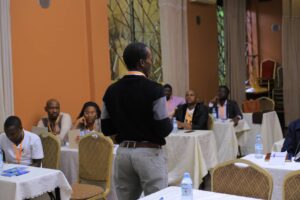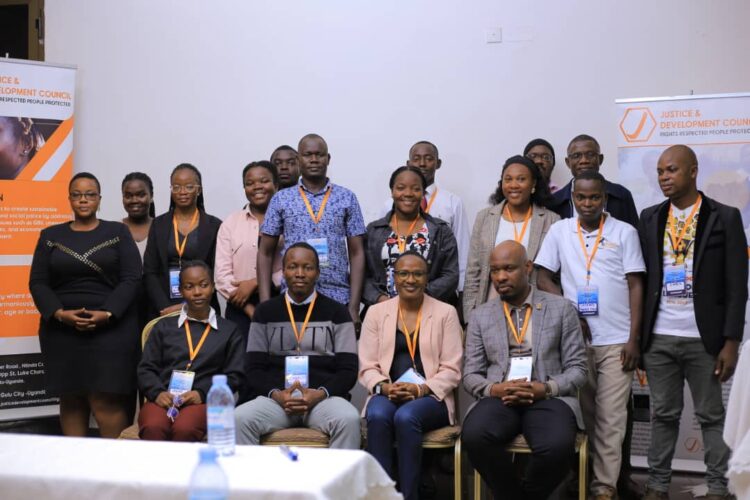By Leonard Kamugisha Akida,
KAMPALA
Civil society organizations (CSOs) working in public health and water safety have called on the government to urgently allocate funding toward drowning prevention, describing the phenomenon as a “silent killer” that claims thousands of lives in Uganda each year.
Uganda records more than 3,000 drowning deaths annually, an average of nine people every day, a crisis that advocates say remains largely overlooked by both policy-makers and the public.
 Speaking during a regional media training workshop on drowning prevention held Monday at Ministers Village Hotel in Ntinda, Charles Onyum Okao, Media Coordinator at the Global Health Advocacy Incubator (GHAI), emphasized the need for the Ministry of Works and Transport to fast-track the implementation of the National Drowning Prevention Strategy. The document, he says once adopted, would serve as a framework for targeted funding and coordinated intervention.
Speaking during a regional media training workshop on drowning prevention held Monday at Ministers Village Hotel in Ntinda, Charles Onyum Okao, Media Coordinator at the Global Health Advocacy Incubator (GHAI), emphasized the need for the Ministry of Works and Transport to fast-track the implementation of the National Drowning Prevention Strategy. The document, he says once adopted, would serve as a framework for targeted funding and coordinated intervention.
“The strategy is already in its advanced stages,” said Okao. “Once completed, it will guide national budgeting toward drowning prevention and enable implementation of evidence-based initiatives involving all stakeholders.”
The workshop drew journalists from across the country and was jointly organized by GHAI, Justice and Development Council (JDC), Safe Transport and Survivor Support Uganda (STASSU), and Design Without Borders, among other partners.
Participants highlighted new data from a 2021 study by the Makerere University School of Public Health, which found that drowning deaths in some fishing communities surpass malaria-related fatalities. According to the study, districts like Mayuge, Serere, and Kyotera recorded drowning mortality rates as high as 24 per 100,000 residents, significantly higher than the national malaria mortality rate of 16 per 100,000.
“In certain regions, more people are dying from drowning than from malaria,” said Onyum. “Yet unlike malaria, drowning remains underfunded and underreported. So, this is an area of great public health interest”

Advocates also pointed to inadequate safety measures on Uganda’s water bodies, particularly in communities that rely on water transport. They called for increased investment in lifesaving equipment, training, and public awareness.
“We need to improve access to lifesaving equipment and train communities in water safety,” said Ruth Praise Kansiime, Communications Officer at STASSU.
“Drowning prevention goes beyond having personnel that can save people. It even takes into account like personal floatation devices. If these people can be availed with personal rotation devices or taught how to use them, it will help to reduce on drowning cases.”
Kansiime stressed that drowning prevention is not solely about rescuing victims, but about equipping at-risk populations with the tools and knowledge to prevent accidents in the first place.
“Preventable drownings should not end in tragedy,” she said. “Every life lost is one too many.”
The calls for action come ahead of World Drowning Prevention Day on July 25, a global observance dedicated to raising awareness and encouraging policy action. July has also been designated as Drowning Prevention Awareness Month, during which CSOs and governments worldwide intensify efforts to promote safety on water bodies.
The Ugandan government is expected to formally release its National Drowning Prevention Strategy later this week, a move CSOs hope will translate into long-term, sustained funding and political commitment.








































